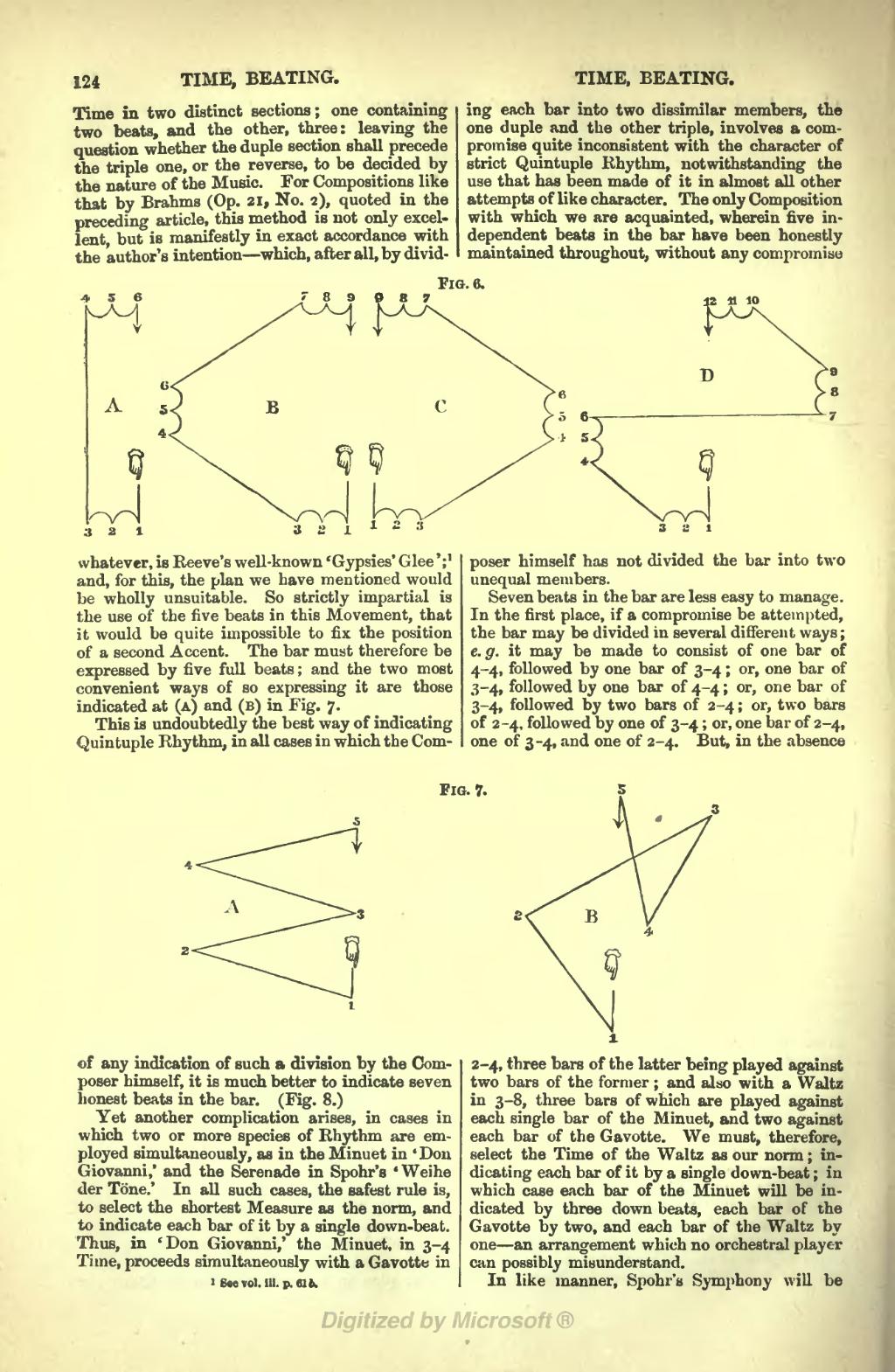
Time in two distinct sections; one containing two beats, and the other, three: leaving the question whether the duple section shall precede the triple one, or the reverse, to be decided by the nature of the Music. For Compositions like that by Brahms (Op. 21, No. 2), quoted in the preceding article, this method is not only excellent, but is manifestly in exact accordance with the author's intention—which, after all, by dividing each bar into two dissimilar members, the one duple and the other triple, involves a compromise quite inconsistent with the character of strict Quintuple Rhythm, notwithstanding the use that has been made of it in almost all other attempts of like character. The only Composition with which we are acquainted, wherein five independent beats in the bar have been honestly maintained throughout, without any compromise whatever, is Reeve's well-known 'Gypsies' Glee';[1] and, for this, the plan we have mentioned would be wholly unsuitable. So strictly impartial is the use of the five beats in this Movement, that it would be quite impossible to fix the position of a second Accent. The bar must therefore be expressed by five full beats; and the two most convenient ways of so expressing it are those indicated at (A) and (B) in Fig. 7.

This is undoubtedly the best way of indicating Quintuple Rhythm, in all cases in which the Composer himself has not divided the bar into two unequal members.
Seven beats in the bar are less easy to manage. In the first place, if a compromise be attempted, the bar may be divided in several different ways; e.g. it may be made to consist of one bar of 4-4, followed by one bar of 3-4; or, one bar of 3-4, followed by one bar of 4-4; or, one bar of 3-4, followed by two bars of 2-4; or, two bars of 2-4, followed by one of 3-4; or, one bar of 2-4, one of 3-4, and one of 2-4. But, in the absence of any indication of such a division by the Composer himself, it is much better to indicate seven honest beats in the bar. (Fig. 8.)
Yet another complication arises, in cases in which two or more species of Rhythm are employed simultaneously, as in the Minuet in 'Don Giovanni,' and the Serenade in Spohr's 'Weihe der Töne.' In all such cases, the safest rule is, to select the shortest Measure as the norm, and to indicate each bar of it by a single down-beat. Thus, in 'Don Giovanni,' the Minuet, in 3-4 Time, proceeds simultaneously with a Gavotte in 2-4, three bars of the latter being played against two bars of the former; and also with a Waltz in 3-8, three bars of which are played against each single bar of the Minuet, and two against each bar of the Gavotte. We must, therefore, select the Time of the Waltz as our norm; indicating each bar of it by a single down-beat; in which case each bar of the Minuet will be indicated by three down beats, each bar of the Gavotte by two, and each bar of the Waltz by one—an arrangement which no orchestral player can possibly misunderstand.
In like manner, Spohr's Symphony will be
- ↑ See vol. iii. p. 61b.
